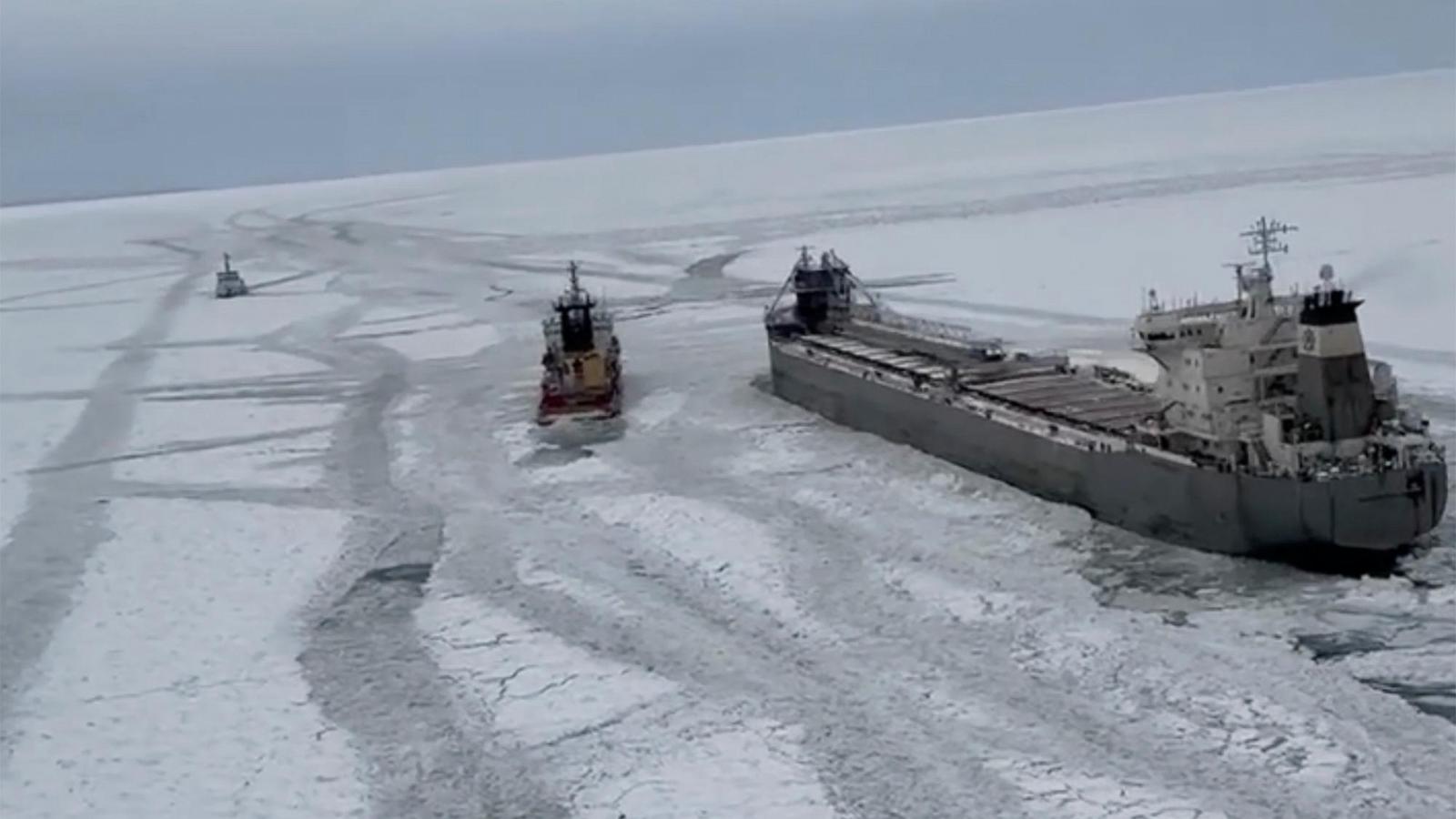Did you hear about the freighter stuck in the ice? This incredible story of the Manitoulin, a 663-foot vessel trapped in Lake Erie's icy grip, will leave you speechless. Read on to discover the amazing rescue mission unfolding on the icy waters of the Great Lakes!
Dramatic Rescue Mission: Freighter Trapped in Lake Erie Ice
Imagine being stuck on a massive freighter, frozen solid in the middle of Lake Erie. That's exactly what happened to the crew of the Manitoulin, a Canadian vessel carrying wheat. The colossal ship, measuring an astonishing 663 feet long, became trapped in heavy ice on Wednesday. As the Manitoulin tried to navigate back to Canada after delivering its cargo in Buffalo, New York, it encountered unforgiving ice conditions that proved too difficult to overcome. Fortunately, no injuries were reported, and the 17 crew members remain safe and sound aboard. The world watched with bated breath as the dramatic rescue mission unfolded, revealing just how challenging and unpredictable winter conditions on the Great Lakes can be.
Coast Guard's Heroic Efforts: A Joint Rescue Operation
The US Coast Guard sprang into action, deploying an icebreaking ship on Thursday to assist the stricken Manitoulin. But the task proved more challenging than initially anticipated, and even this mighty vessel struggled to break through the thick ice. Recognizing the gravity of the situation, a second icebreaking ship was promptly dispatched to aid in the rescue effort. As a sign of international cooperation and mutual support, the Canadian Coast Guard also contributed a ship, demonstrating solidarity during this critical moment. A US Coast Guard helicopter is continually monitoring the situation. Meanwhile, a third US Coast Guard icebreaking ship is en route to provide additional support.
The Perils of Lake Erie in Winter: Understanding Ice Conditions
Lake Erie is known to be particularly treacherous during winter, and such events are not entirely uncommon. Many freighters traverse the Great Lakes in winter. Occasionally, however, ice conditions become so severe that the ice is just too thick and impossible to overcome, trapping vessels in its icy clutches. These occurrences highlight the formidable challenges faced by vessels in the Great Lakes region during the colder months. Navigating these treacherous waters in extreme conditions can result in situations such as the Manitoulin's, where even large, powerful ships get caught out.
Factors contributing to ship entrapment in ice:
- Unexpected ice buildup: Rapid freezing leading to thicker-than-anticipated ice.
- Wind and currents: Shifting ice patterns, making movement exceptionally unpredictable.
- Navigation difficulties: Ice obscures visibility, resulting in dangerous misjudgments of conditions.
The Manitoulin's Journey: A Story of Perseverance
The story of the Manitoulin has captivated people worldwide, drawing attention to the often overlooked reality of winter navigation on the Great Lakes. The ship’s plight showcases the dedication and professionalism of the coast guards from both countries. The prompt actions by both U.S. and Canadian Coast Guards prevented any losses and helped in successfully extracting the ship and the crew from an otherwise perilous situation.
The power of international collaboration
This joint operation stands as a testament to the importance of cooperation among nations when addressing challenging maritime issues. It perfectly underscores that swift action and unified coordination are crucial in ensuring successful outcomes in emergencies.
Takeaways: Learning from the Great Lakes Ice Trapping
This incident serves as a potent reminder of the potential risks that winter conditions pose on the Great Lakes, particularly for maritime vessels. Such circumstances highlight the vital role played by the coast guard and emergency response teams who diligently safeguard lives and property. The impressive, united efforts from both the United States and Canadian coast guards resulted in a positive conclusion. Ongoing assessment of ice conditions on the Great Lakes is essential for improving navigational safety during challenging winter weather. The collaboration emphasizes how international partnerships can make rescue operations safe and effective. Improved technology in ice forecasting and weather prediction may better prevent similar issues from occurring in the future.
Take Away Points:
- The Manitoulin incident underlines the significant challenges of navigating the Great Lakes during the winter.
- International cooperation between the US and Canadian Coast Guards was crucial in the rescue.
- Ongoing monitoring and improved technology can help improve navigational safety in the future.









